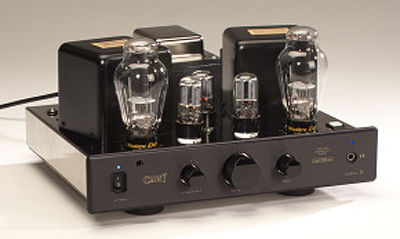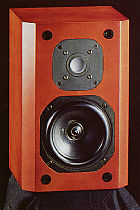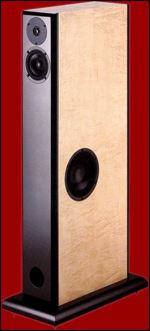LATEST ADDITIONS
Cary Audio Design CAD-300SEI integrated amplifier
As strongly as I believe that the listening experience is the most reliable method of judging the quality of audio equipment, I've been biased against single-ended tube amplifiers because of their quirky measured performances. Without having heard single-ended under good conditions—much less living with an SE amplifier—I had concluded that many listeners must like them because they're euphonically colored by large amounts of low-order distortion and impedance interactions with the loudspeakers. SE amplifiers seem to be a departure from the goal of making the electronics transparent. Moreover, the range of loudspeakers suitable for SE amplifiers is so restrictive that I wondered why anyone would bother with these underpowered distortion-generators. I had fallen into a trap that I've repeatedly railed against: drawing conclusions without firsthand listening experience (footnote 1).
JMlab Micron & Micron Carat loudspeaker
Let me take you back some 40 years to the mono days of the early 1950s. It's unlikely that the minimonitor genus of loudspeakers, of which this French JMlab is a prime example, would have survived back then. There was the practical problem of available amplifier power. The average amp could squeeze out no more than 10 to 15W into an 8 ohm load—far less power than the typically insensitive minimonitor demands for adequate dynamic headroom. But that in itself would not have sufficed to displace the minimonitor from the marketplace. After all, "high-power" amps (50-watters) could be had at a price.
Audio Research Classic 60 power amplifier
"The only tubes that I want to see in my household are...the picture tube in my TV and the magnetron in the microwave oven," a Glendale, CA, reader recently wrote, and I guess his feelings reflect those of many when confronted by a supposedly "obsolete" audio technology. Forty years after the invention of the transistor and 20 after the widespread introduction of solid-state amplifiers (footnote 1), it must come as a shock to readers of the mass-market "slicks" that not only do a number of American manufacturers manufacture amplifiers and preamplifiers using tubes, but some of those companies—Counterpoint and Audio Research in particular—are among the more successful. It is the Classic 60 power amplifier from Minnesota-based Audio Research that is the subject of this month's lead-off equipment review.
The Single-Ended Amplifier: Cary's Dennis Had
<I>Cary Audio Design founder Dennis Had is largely responsible for popularizing single-ended amplifiers in America. Since appearing on the scene in 1989, Cary Audio Design has forged its own niche in the high-end audio industry. I spoke with Dennis Had about how he got started building amplifiers, and why he's so committed to single-ended triode designs.</I>
Recording of September 1995: Reger: Sonatas for Unaccompanied Violin, Vol.2
<B>REGER: Sonatas for Unaccompanied Violin, Vol.2</B><BR> Op.91 Nos. 1, 3, 5, 6<BR>Ulrike-Anima Mathé, violin<BR> Dorian DOR-90212 (CD only). Sergio Bernal, Douglas Brown, prods.; David H. Walters, Douglas Brown, engs. DDD. TT: 55:30
Quad ESL-63 loudspeaker
Audio Physic Virgo loudspeaker
The Sears guy came to our basement the other day to check out the water heater. Staring at the walls of LPs and tiptoeing through the piles of CDs strewn on the floor, he exclaimed, "What the heck are you? A disc jockey?" So I told him.
Proceed PAV audio/video preamplifier
Until just recently, only companies known primarily for their surround-sound processors were producing the most advanced—and most expensive—Home Theater products. No longer. It was inevitable that traditional high-end audio manufacturers would begin producing equipment for this fast-growing market.
Berning EA-2101 power amplifier
It was back in the mid-'70s that David Berning made a name for himself in the Baltimore-Washington area as an avant-garde designer—someone with a truckload of fresh ideas about tubes. At the time, though Audio Research was starting to crank out pretty decent amplifiers, tube design was pretty much reduced to a rehash of the Williamson circuit and the Dynaco mod of the month.





